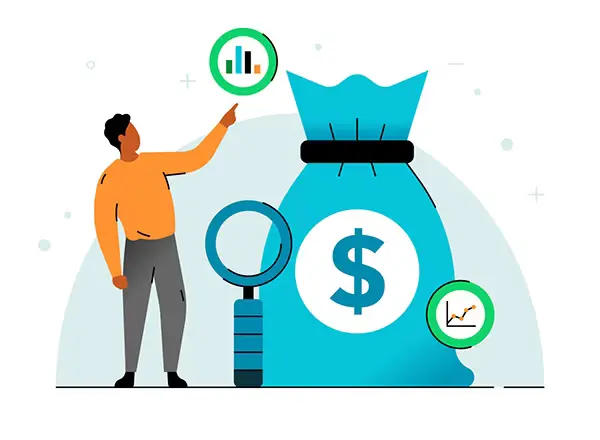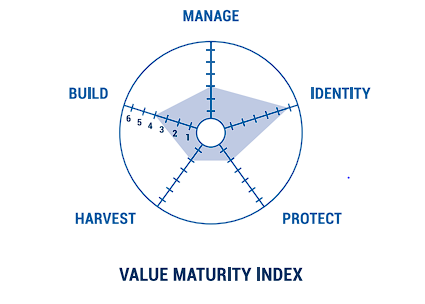Are you running your
business...or is it running you?
We revitalize businesses to drive profits, grow valuation, and unlock wealth.
Are you running your business...or is it running you?
We revitalize businesses to drive profits, grow valuation, and unlock wealth.
THE PRIMARY GOAL OF ANY BUSINESS
INCREASING BUSINESS VALUATION
Focusing on value is the only way the owner can achieve both transferable business value and increased business income. Business value is impacted by profits (EBITDA) and several intangible factors.
By focusing on value, you must address not only the drivers of profit, but many other areas of the company which are often ignored.
This explains why the vast majority of businesses do NOT sell, and owners dreams are shattered.

Programs That Help You Grow,
Systemize, and Scale

PROFITS
Revenue is Vanity
Profit is Sanity
Cash is King

VALUE
Focusing on value ensures higher profits and a saleable business.

WEALTH
What is your Net Worth if your business does not sell?

EXIT
Exit planning is driving profits and value... that's good business strategy.

PROFITS
Revenue is Vanity
Profit is Sanity
Cash is King

VALUE
Focusing on value ensures higher profits and a saleable business.

WEALTH
What is your Net Worth if your business does not sell?

EXIT
Exit planning is driving profits and value... that's good business strategy.

VALUE MATRIC INDEX
Learn where you score in each segment of value maturity by completing the Value Maturity Index.
Give yourself a score of six if you have fulfilled everything in a category and a score of one if you have done nothing at all in the segment.
Draw a line connecting each segment and shade in the area. The non-shaded area represents your area for improvement.
How large is your area?
FIVE STAGES OF VALUE MATURITY
5 Thing Every Business Owner
Must Know

IDENTIFY
Roughly 80-90% of your net worth is locked in your business.
In order to maximize your value, you must determine the hidden value in your business and you will only unlock that value if you have a saleable business.
This makes a massive impact on you being able to continue your lifestyle.
It is difficult to plan out your next act without having a professional business valuation, which will help determine what factors to focus on in the interest of accelerating the value of your business.
PROTECT
After identifying your business’s baseline value, you must protect that value by mitigating any risks associated with it.
Risks are divided into three categories: personal, financial, and business.
Protecting value is the first step in building value.
To best protect your value, you must consider the 5D’s: Death, Disability, Divorce, Distress, and Disagreement.


BUILD
Once you have protected your existing value, your focus can expand to building value.
There are two ways to build value: increase your cash flow (EBITDA) and improve your multiple.
Your multiple is the number assigned by the private capital market to the value of your tangible and intangible assets and their associated risks.
Intangible assets include Human, Structural, Customer, and Social capital. Improving your intangible capital is critical to building business value.
HARVEST
After building your business value, it is time to harvest the fruits of your labor.
There are numerous paths your business exit can take.
You might discover that after reviewing your options, you decide not to sell your business and instead transition the company to a son or daughter, sell the real estate and keep the company, or continue to build value.


MANAGE
You manage value throughout the course of your business lifecycle, but the most important time to do so is while exiting your business.
To achieve the most value, you must manage not only your business value but your personal and personal financial value as well.

IDENTIFY
Roughly 80-90% of your net worth is locked in your business.
In order to maximize your value, you must determine the hidden value in your business and you will only unlock that value if you have a saleable business.
This makes a massive impact on you being able to continue your lifestyle.
It is difficult to plan out your next act without having a professional business valuation, which will help determine what factors to focus on in the interest of accelerating the value of your business.

PROTECT
After identifying your business’s baseline value, you must protect that value by mitigating any risks associated with it.
Risks are divided into three categories: personal, financial, and business.
Protecting value is the first step in building value.
To best protect your value, you must consider the 5D’s: Death, Disability, Divorce, Distress, and Disagreement.

BUILD
Once you have protected your existing value, your focus can expand to building value.
There are two ways to build value: increase your cash flow (EBITDA) and improve your multiple.
Your multiple is the number assigned by the private capital market to the value of your tangible and intangible assets and their associated risks.
Intangible assets include Human, Structural, Customer, and Social capital. Improving your intangible capital is critical to building business value.

HARVEST
After building your business value, it is time to harvest the fruits of your labor.
There are numerous paths your business exit can take.
You might discover that after reviewing your options, you decide not to sell your business and instead transition the company to a son or daughter, sell the real estate and keep the company, or continue to build value.

MANAGE
You manage value throughout the course of your business lifecycle, but the most important time to do so is while exiting your business.
To achieve the most value, you must manage not only your business value but your personal and personal financial value as well.
